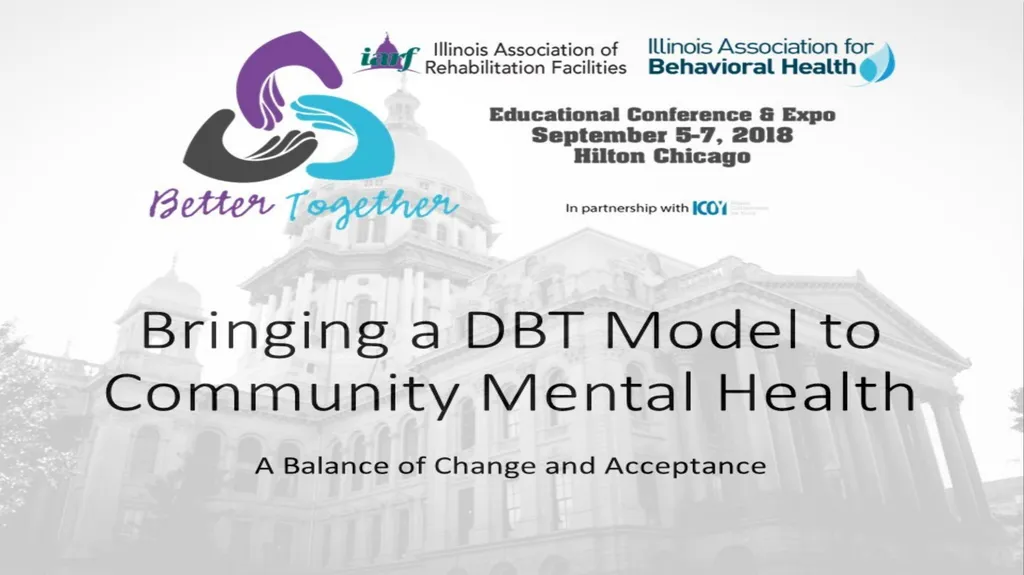The Treatment What is DBT Developed by Marsha
Author : aaron | Published Date : 2025-05-13
Description: The Treatment What is DBT Developed by Marsha Linehan for clients what were frequently hospitalized for suicidal ideation or behavior Dialectical Behavioral Treatment modality for dysresgulation in any of the following areas Affect
Presentation Embed Code
Download Presentation
Download
Presentation The PPT/PDF document
"The Treatment What is DBT Developed by Marsha" is the property of its rightful owner.
Permission is granted to download and print the materials on this website for personal, non-commercial use only,
and to display it on your personal computer provided you do not modify the materials and that you retain all
copyright notices contained in the materials. By downloading content from our website, you accept the terms of
this agreement.
Transcript:The Treatment What is DBT Developed by Marsha:
The Treatment What is DBT Developed by Marsha Linehan for clients what were frequently hospitalized for suicidal ideation or behavior Dialectical Behavioral Treatment modality for dysresgulation in any of the following areas: Affect Interpersonal Self Behavioral The theory of client struggles in DBT reflects the central dialectic of Acceptance vs Change Evidence Based Practice for Standard DBT RCTs comparing DBT treatment to treatment as usual: Among females with BPD DBT decreased risk for suicidal behaviors, suicide attempts, non suicidal self-injury (Verheul et al., 2003), (Linehan et al., 1993) Among adults with Cluster B Personality Disorders Decreased self-reported risk behaviors (Feigenbaum et al., 2012) Female Veterans with BPD DBT decrease NSSI, hospitalizations, suicidal ideation, dissociation, hopelessness, depression, anger suppression/expression (Koons et al., 2001) RCT comparing DBT to treatment by community experts (non-behavioral): DBT cut suicide attempts by 50% and inpatient hospitalizations by 73% (Linehand et al., 2006) Evidence Based Practice for Standard DBT Shown to be effective for: Substance abuse and dependence (Harned et al., 2009) Suicidal adolescents (Pistorello et al., 2012; McDonell et al., 2010; Rathus & Miller, 2002) PSTD due to childhood sexual abuse with and without co-morbid BPD (Bohus et al., 2013) Eating disorders co-morbid with substance abuse (Courbasson, Nishikawa, & Dixon, 2009) Eating disorders alone (Safer & Jo, 2010) Depression in older adults (Lynch et al., 2003) Components of Standard DBT What is Dialectical Behavior Therapy (DBT)? (n.d.). Retrieved from https://behavioraltech.org/resources/faqs/dialectical-behavior-therapy-dbt/ Our Setting Community Mental Health at Trilogy Not-for-profit behavioral healthcare organization Primarily funded through Medicaid Trauma-informed care Person-centered Varying levels of care Diverse population of clients Integrated approach Locations throughout Chicago Community Mental Health at Trilogy Primarily provide outpatient and community-based services Integrated health services on-site Community outreach Medication training Case management Individual skill building and psychotherapy Group skill building and psychotherapy Specialized services Beacon Strengths to providing Standard DBT in Community Mental Health Setting Barriers to providing Standard DBT in Community Mental Health Setting Limitations Resources Space Staff turnover Complexity of population Potential impact on client's ability to engage in treatment Our Approach Specialized Components of DBT at Trilogy Group Skill Building Component 1 Adapted to incorporate mindfulness and dialectics in each cycle Additional mindfulness groups offered as supplements Clients can join as each new cycle begins (like adolescent DBT) Meet clients were they are at and continue to challenge more growth Groups offered Foundations of DBT Module focused Integrated Individual Therapy Component 2 Stage














